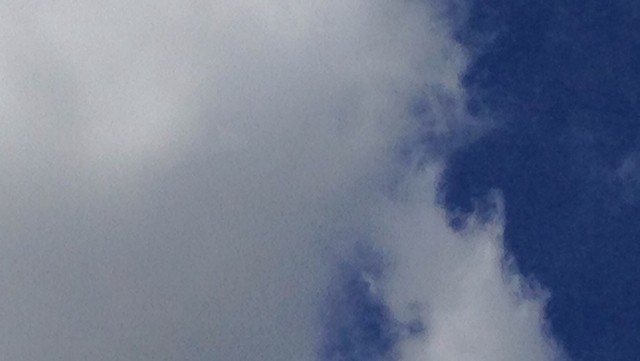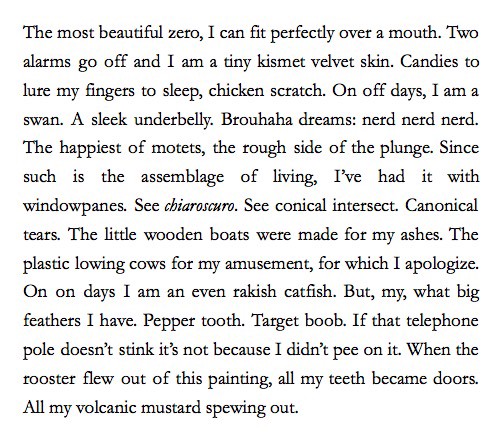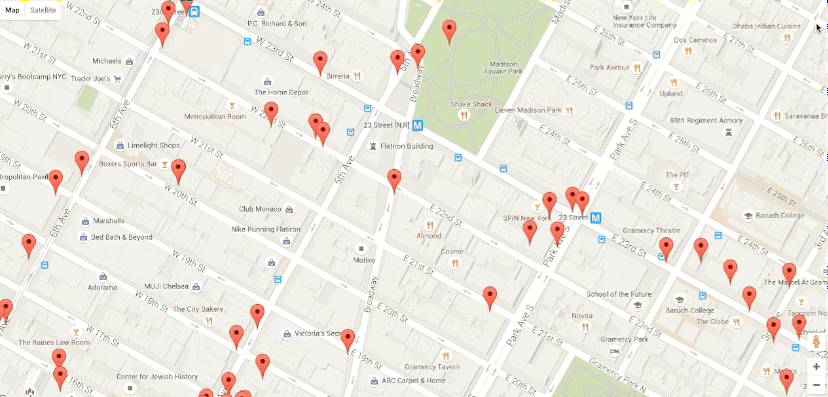Why WOULDN'T This Winter Suck?
“As it looks right now, the East Coast seems in line for a fairly harsh winter, with plenty of snow and ice, especially for interior parts of New York and New England. If the NAO — which is notoriously unpredictable this far in advance — hangs on and remains strongly negative, you can add New York City to that list.”
— What is your plan to make it through this winter?
Fever The Ghost, "1518"
I am not all-the-way sure on this one but every time it reaches the point where I’m like, “That is GRATING AS FUCK” and am about to close tab it turns into something that makes me pause and go, “Oh, wait, that’s a whole bunch of all right.” I guess you will just have to decide for yourself — I have been diagnosed with Irritable Al Syndrome, so what I find grating might not even register as irksome to you — but I hope that you are able to enjoy. Also: Friday. I don’t know how you did it, but you got here. You surprise me sometimes. In a good way.
Elena Ferrante on Jane Austen
“She uses neither her own name nor one that she has chosen. Her stories are not reducible to her; rather, they are written from within a tradition that encompasses her and at the same time allows her to express herself. In this sense they are indeed written by a lady, the lady who does not fully coincide with everyday life but peeks out during the often brief time when, in a common room, a space not hers, Austen can write without being disturbed: a lady who disappears whenever something — the disorderly world of the everyday — interrupts her, forcing her to hide the pages. This lady doesn’t have Jane’s anxieties or her reserve. The lady-narrator describes the ferocity of the male world that clusters around income, is afraid of change, lives idly, contends with futility, sees work as degrading. And above all she rests a clear gaze on the condition of women, on the battle between women to win men and money. But she doesn’t have Jane’s natural resentments toward daily life. The lady-who-writes can set aside dissatisfaction and bitterness, spread a light, ironic glaze over the old world that, with its wrongs, is collapsing and the new world that is emerging, with its abundance of new wrongs. But pay attention, for the lightness conceals pitiless depths — it’s a glaze that, miraculously, doesn’t sweeten anything.”
— Why are you still here? ELENA FERRANTE ON JANE AUSTEN, damnit.
New York City, October 14, 2015

★★★★ A pink glow marked the beginning. A worker swept dead leaves away from the bike-share rack. Dove-gray clouds, nothing serious, quelled the light for a while. By coffee time, full sun was on and white clouds reared above the building line. The young guy asking for money — not asking for money, of course, everyone acts like that, just demanding a little basic human attention to his story, which was about how he needed money — steered his pitch toward the clothing store across the way, the warm clothes in there, it being so cold. If it were a story to debate about, one might have noted that people were out in shirtsleeves. Later the shade of the cross street darkened to something more than shade. When the sky went blue again, there was a chill on it.
A Poem by Rebecca Liu
by Mark Bibbins, Editor
Portrait of the Wife of Bath, Her Passing Breezes, the Stolen Pear, Tallied for Change, Tailed to the Last, Her Little Spanish Cock
after Elizabeth Willis

Rebecca Liu’s poems can be found or are forthcoming in Boston Review, Gulf Coast, and Apogee Journal. She was recently named a finalist for the 2015 PSA Chapbook Fellowship and the 2015 “Discovery”/Boston Review Poetry Contest.
Last Kid To Be Excited By Gift Of Books Tells All
“I just can’t believe this is my 15 minutes of fame — I was hoping it would come in another form. But I guess you have to take what you can get.”
The Homeless Wall of Shame
by Brendan O’Connor

Late this summer, David Fox, a twenty-five-year-old web developer from Syosset, New York, launched an app called NYC Map the Homeless. The app works like this: Users take photographs of homeless people and upload the pictures to a map of New York City using tags like #smokingpot, #psychotic, and #aggressivebegging. “I want to help [city officials] be able to find these people and keep them off the streets,” he told the New York Post. On Tuesday night, according to the Department of Homeless Services, 57,460 New Yorkers slept in homeless shelters across the city. How many more slept on the street is not known. According to Fox, since its launch on August 5th, the app has been downloaded about two thousand times between the iOS and Android versions, and about fifteen hundred photos have been uploaded. (A visualization of the data produced by the app is visible here.) “The app’s purpose is to gather as much data as possible and help make sense of the homeless issues we’re seeing with the use of data and predictive analytics,” Fox wrote in an email to the New York Observer. Lindsey Davis, the director of crisis services at the Coalition for the Homeless — which estimates that nearly sixty thousand New Yorkers are homeless — expressed ambivalence toward Fox’s project. “There are some privacy concerns I would have about that,” Davis told the Voice, going on to say that use of the app might erode trust between the people being photographed and those that might actually be looking to help. “When they do meet someone who could provide them assistance, it makes it harder to engage them.”
Fox, a programmer who studied philosophy and computer science at Binghamton University, thinks such concerns seem “counter-intuitive.” “While I think it’s nice that these people are thinking about the privacy of homeless people, the purpose of the app is to actually help homeless people by encouraging users not to simply walk by,” he told me via email. “Many of these homeless are sleeping on the streets — of one of the most populated cities in the world — and I don’t really think being concerned about privacy in these circumstances is a productive argument. One thing I do vouch for with the app is that whenever anyone who asks for a photo that they appear in to be removed, it gets removed.”

Fox was inspired to build the app after joining a neighborhood group on Facebook called “Third and 33rd (and Beyond!),” of which he is now one of four administrators. “Third and 33rd (and Beyond!)” describes itself as “A group forum to help improve our neighborhood (Kips Bay, Murray Hill, Rose Hill, Gramercy Park, Mid-Town East) and share pictures (time and date stamped) and incidents that are related to public safety and quality of life.” It is a closed Facebook group, and my membership is still pending; there is, however, a public Facebook page by the same name (less the parenthetical) to which anyone can upload photographs of homeless people, much like in Fox’s app. Mostly, though, the photographs are uploaded anonymously — that is, by whoever runs the page. (It’s not clear whether the page is directly associated with the group, although it appears to be so. Relevant inquiries to Facebook group’s administrators went unanswered.) “Nannies and kids have to see this dude at 30th and 1st masturbating — Friday 3:30 pm Sept. 11,” complains one caption. “Nodding away in drugged out bliss. Today, August 15th at 3pm. @nd Ave and 30th Street,” sneers another. “Urinating on a flower bed in Murray Hill, 5pm Aug 10th — 35th & Lex. To me public urination means the person is insane and must be taken away and medicated,” declares a third. “History will judge us as the society that made mental illness and insanity the norm.” (Alternet’s Tana Ganeva has more from the private group, as well as Murray Hill itself.)

This summer was marked by a maelstrom of anti-homeless sentiment, agitated largely by the tabloids and in particular the New York Post. In July, Gawker reported that the Post had assigned at least sixteen reporters to cover one particular homeless person, John Tucker, at the behest of the paper’s editor-in-chief Col Allan. “The bum peed in Col’s neighborhood,” one Post reporter told Gawker. “So there’s a huge NIMBY factor.” The city’s homeless population has grown around seven percent under De Blasio, dropping from a high last year of around 59,000 people; however, DNAinfo reported in August that 311 calls complaining about homeless people have risen nearly sixty percent. Basically, in addition to the highly manufactured desnudas controversy, the reactionary tabloids — sympathetic to largely unrelated police grievances with the mayor — have used the very real homelessness crisis as a bludgeon against De Blasio. It has proved to be an effective one: The NYPD cleared out an encampment of homeless New Yorkers in Harlem last month. Incidentally, it is not a crime to ask for money or to be without a home.
Less than a week after Map the Homeless launched, news broke that one of the city’s police unions, the Sergeant’s Benevolent Association, had sent a memo (“Peek-a-Boo, We See You Too!”) to its members, instructing them to photograph homeless citizens, which the SBA would then upload to Flickr. In the memo, SBA president Ed Mullins uses the same logic as Fox: The photographs are not intended to shame the people pictured; the photographs are intended to shame the politicians who are neglecting the people pictured. One might almost be able to grant his argument if it didn’t follow a two-page-long rant about recent efforts to reform the NYPD.

“The call for accountability of the NYPD is fine,” Mullins wrote. “We should be accountable to the citizenry, as should every member of the nationwide law enforcement community. But, shouldn’t accountability go both ways? We, the ‘Good Guys,’ are sworn to protect our citizens. Shouldn’t our public officials be held to the same standard?” He goes on to ask: “As you travel about the City of New York, please utilize your smart phones to photograph the homeless lying in our streets, aggressive panhandlers, people urinating in public or engaging in open-air drug activity, and quality of life offenses of every type.” At one point, Gawker reported, the SBA had posted 241 photographs of homeless residents of New York City; all have since been removed from the SBA’s account. An email to the address to which photographs were to be sent did not provoke a response.
Last week, Dan Bamberger, an independent broker, released a report implying that homelessness might possibly be negatively affecting property values in the Murray Hill and Midtown East neighborhoods. “I just took a small data set and was trying to plant a seed,” Bamberger told DNAinfo. “I wanted to get people thinking.” In a phone conversation yesterday, Bamberger spoke approvingly of the Map the Homeless app’s potential to raise awareness, but, after realizing that an inquiry from a reporter would result in his words being reported, asked not to be quoted.
Still, Fox disputes that the motivation behind the app or Third and 33rd is to shame anyone (“at least for me and everyone I know”). “Yes, some people will use both to shame, that’s the nature of pretty much any resource on the internet that includes any kind of content,” he wrote to me. “However, that isn’t the intent and I certainly haven’t seen it becoming a problem in the vast majority of cases. Both the Facebook group and app have sparked very important conversations with homeless shelters, the NYPD, and many different organizations. While it’s small progress, it’s infinitely more progress than is possible with the attitude of just walking by every homeless person you see on the street and not even thinking twice about it. I was myself guilty of having that attitude about not paying attention for a long, long time.”
Recently, Fox added “clustering functionality” to Map the Homeless, to see where a high number of photos have been added. “The clustered map depicts areas that have a much higher concentration of homeless people compared to others,” he wrote. “A large number of photos share common tags — some that are frequently used are ‘sleeping,’ ‘aggressive begging,’ and ‘needs medical aid.’ I think many people miss the importance of the sleeping tag, but I personally see it as one of the most important and compelling ones. Sleeping on the streets of NYC obviously isn’t safe — but at the same time, many of the homeless shelters in the city are lacking in terms of living conditions and safety. Unfortunately, I don’t believe the city officials are doing enough to address this problem.”
Fox wants to use the data from the app to determine which shelters are most lacking. “Interesting and community-benefiting queries like the one above are very do-able with this kind of data. The volume of data keeps growing, but some (more complex) questions might require more data than is currently there.” In other words: Further research is required.
Party British
“A meerkat-keeper has been ordered to pay £800 in compensation after glassing a love-rival monkey handler in a row over a llama-keeper at a Christmas party.”
Goldmund, "Sometimes"
I don’t know how your day is gonna go, but I know how most days go, and let’s be honest, they’re rarely something you would do if your parents hadn’t signed you up for them a long time ago. But whatever happens today, here are three minutes of quiet grace that at the very least can help you forget what’s in store for you and might even make you feel like a world with such beauty in it, however brief, can’t be all bad. I mean, that’s the on the far end of the optimism scale, you are a lot more likely to spend a few minutes not remembering how awful things are, but I did want to at least put the possibility out there. Enjoy.
